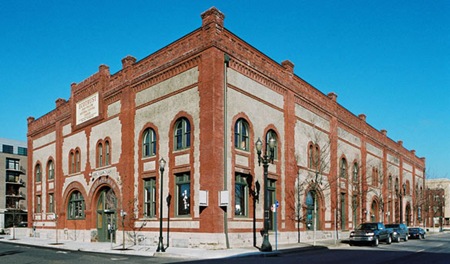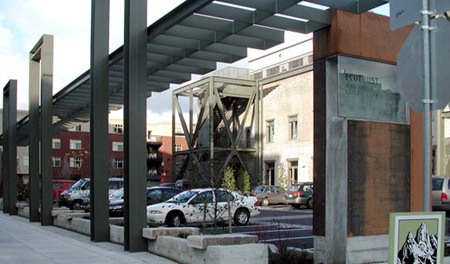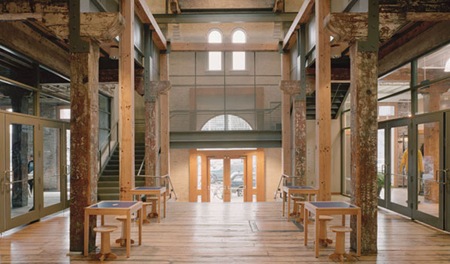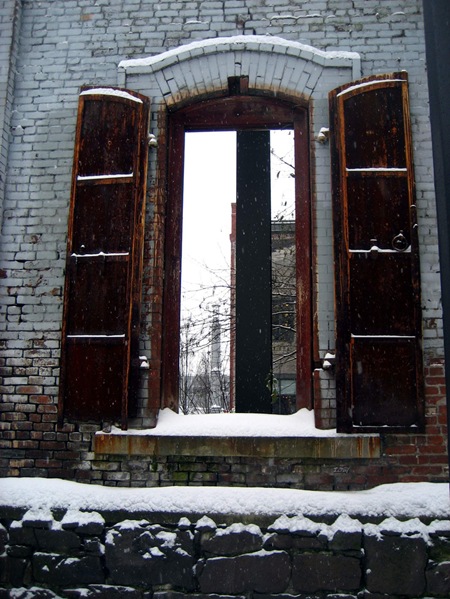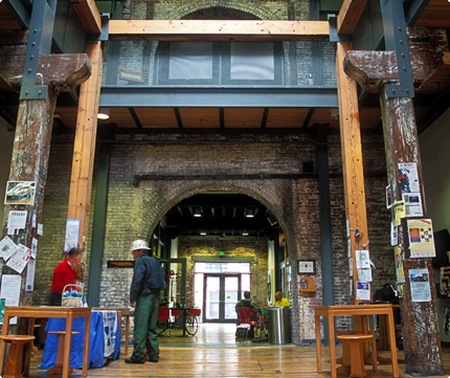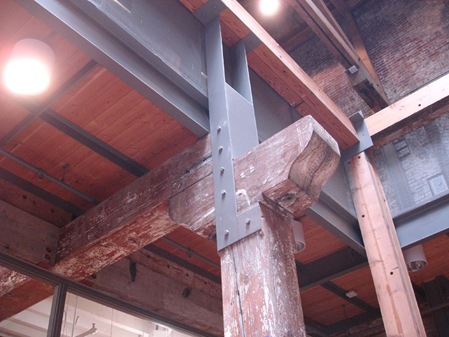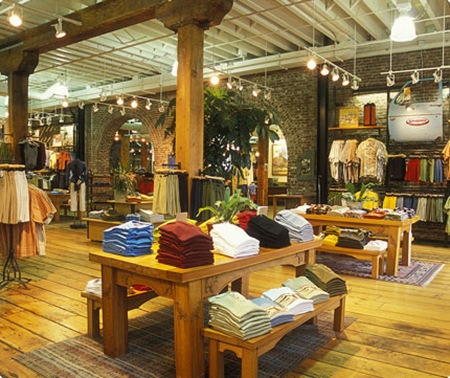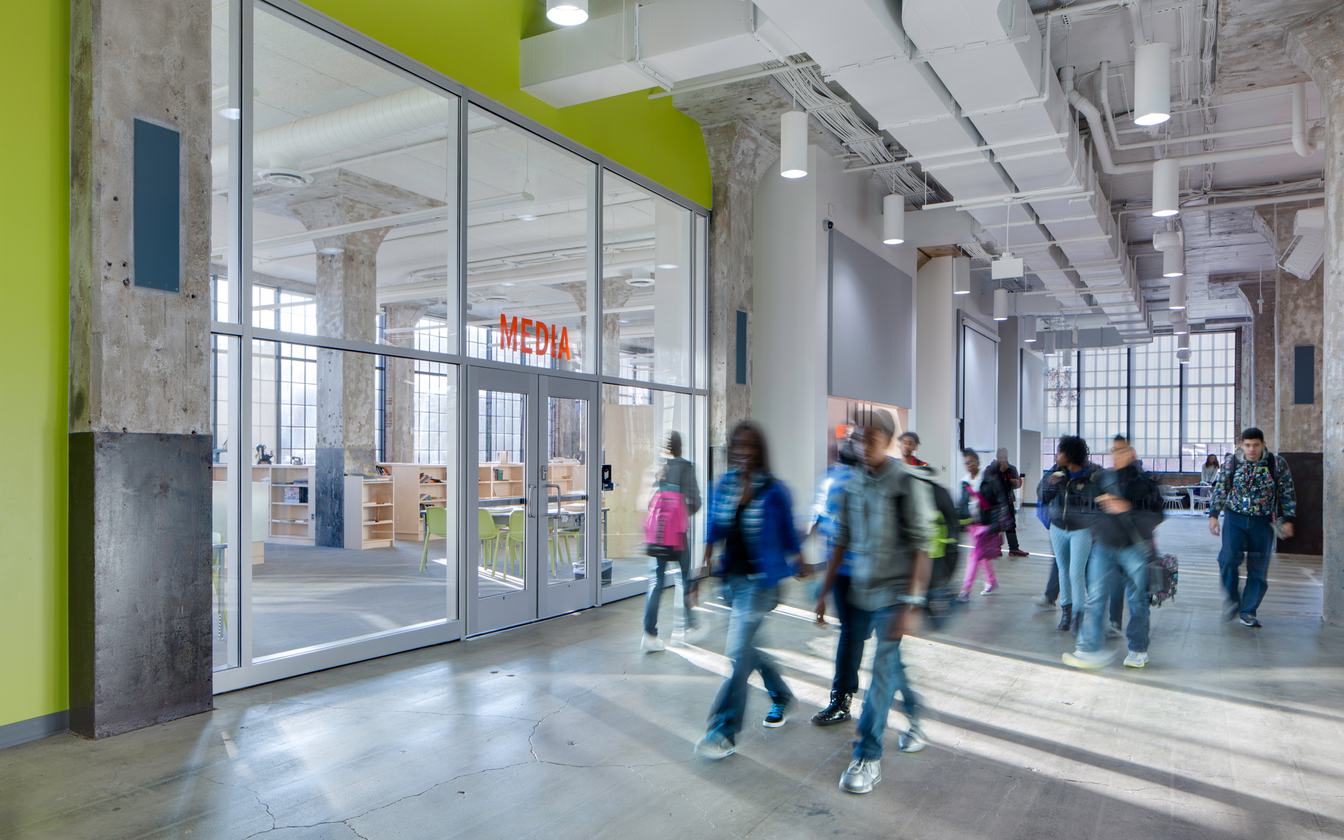1006 Morton Street
Baltimore, MD 21201
410.576.9131 | Email
January 14 2008
Jean Vollum Natural Capital Center
This story naturally falls into a category of posts Greenline has been exploring over the past few days focusing loosely on adaptive reuse and preservation. For more on this topic please take a look at recent posts: The Green vs Preservation Debate, Historic Preservation in Raleigh Hits LEED Platinum, The Greening of Montgomery Park, and my favorite Adaptive Reuse of a Pigsty.
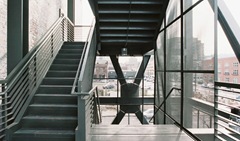 The Jean Vollum Natural Capital Center, also known as the Ecotrust building, is an adaptive reuse and renovation of an 1895 warehouse building in Portland's Pearl District. The building is notable as a sustainable gathering place for "environmentally and socially responsible ideas, goods and services." The project owners, Ecotrust, state plainly their hope that "this environmental restoration initiates a larger vision of bringing together a community of tenants and inviting the public to share in the goals of encouraging a conservation economy." These are challenging goals for both a building and a community of businesses and organizations, but the results make a strong case for a society where environmental stewardship is integral to all aspects of life.
The Jean Vollum Natural Capital Center, also known as the Ecotrust building, is an adaptive reuse and renovation of an 1895 warehouse building in Portland's Pearl District. The building is notable as a sustainable gathering place for "environmentally and socially responsible ideas, goods and services." The project owners, Ecotrust, state plainly their hope that "this environmental restoration initiates a larger vision of bringing together a community of tenants and inviting the public to share in the goals of encouraging a conservation economy." These are challenging goals for both a building and a community of businesses and organizations, but the results make a strong case for a society where environmental stewardship is integral to all aspects of life.
Many of the ideas presented tectonically in the Natural Capital Center are taken from the writings of Paul Hawken and Amory and Hunter Lovins. Especially potent and present are those ideas from their seminal book, Natural Capitalism: Creating the Next Industrial Revolution. In the text the authors argue that "businesses are [and can] increasing their earnings, boosting growth, reducing costs, enhancing competitiveness, and restoring the earth by harnessing a new design mentality," a design mentality which focuses on ecologically sustainable strategies. More information on Natural Capitalism can be found on the organization's website.
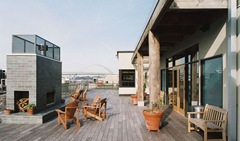 The Natural Capital Center is housed in what was originally the warehouse for the McCraken Wholesale Company. The building was originally constructed in 1895 and is heavily influenced, architecturally, by the work of Henry Hobson Richardson. The project was started in 1998 when the nonprofit conservation organization, Ecotrust, bought the building. It is worth noting that the board of Ecotrust is filled with many famous figures. The center's namesake, Jean Vollum, was a board member and donated the funds to buy the structure. Other board members were Jane Jacobs (author The Death and Life of Great American Cities) and Stewart Brand (author of How Buildings Learn). The roughly 70,000 SF renovation was built for approximately $12.4 million and was completed in September of 2001. The project is also especially notable as the first historic renovation to receive LEED Gold certification by the USGBC.
The Natural Capital Center is housed in what was originally the warehouse for the McCraken Wholesale Company. The building was originally constructed in 1895 and is heavily influenced, architecturally, by the work of Henry Hobson Richardson. The project was started in 1998 when the nonprofit conservation organization, Ecotrust, bought the building. It is worth noting that the board of Ecotrust is filled with many famous figures. The center's namesake, Jean Vollum, was a board member and donated the funds to buy the structure. Other board members were Jane Jacobs (author The Death and Life of Great American Cities) and Stewart Brand (author of How Buildings Learn). The roughly 70,000 SF renovation was built for approximately $12.4 million and was completed in September of 2001. The project is also especially notable as the first historic renovation to receive LEED Gold certification by the USGBC.
Sustainable features of the building include:
- 98% of construction debris reused or reclaimed
- 75% of existing building shell reused
- 50% of materials harvested locally
- 20% energy savings achieved via efficient windows, lighting fixtures and ventilation system
- Daylight is available in 75% of indoor spaces
- FSC-certified, sustainably harvested wood used throughout
- Rainwater is filtered and absorbed through bioswales and on ecoroof - protecting the Willamette River
- Environmentally innovative interior materials such as recycled paint, wheatboard cabinets, and rubber flooring from recycled tires
The community of tenants working in the center were all selected because they shared in the mission of Ecotrust. The list includes:
- The City of Portland's Office of Sustainable Development
- Patagonia
- Ecotrust
- Sustainable Harvest
- Upstream 21
- Progressive investment Management
- and more...
Here (below) is a picture of the exterior facade before renovation...
and some pictures from the building interior...
For more information please visit the Ecotrust website.
Recent Posts
Reimagining Harborplace to Create Space for Both Private Development and Expanded Public Space » Lawyer's Mall Reconstruction Progress » Confronting the Conventions of Customary Practice » Reconceived Facades: New Roles for Old Buildings » Ivy Bookshop Opens for Business! »
Categories
Yellow Balloon Baltimore » Products + Technology » Industry + Practice » Other » Architecture »
Links
Organizations
- USGBC Baltimore Regional Chapter »
- AIA - American Institute of Architects »
- USGBC »
- The Walters Art Museum »
- Green-e »
- Center for Building Performance and Diagnostics (CMU) »
- Green Globes »
- Prefab Lab (UT) »
- Center for Sustainable Development (UT) »
- Architecture 2030 »
- Bioneers »
- Street Films »
- FreeCycle »
- Chesapeake Bay Foundation »
- Archinect »
- BD Online - The Architects Website »
- National Wildlife Foundation »
- Natural Resources Defense Council »
- Overbrook Foundation »
- Merck Family Foundation »
- Ecology Center »
- New Building Institute »
- Neighborhood Design Center »
- The Leonardo Academy »
- ZigerSnead Architects LLP »
- The Rocky Mountain Institute »
- Urban Habitats »
- ACORE - American Council on Renewable Energy »
- Parks and People Foundation of Baltimore »
- Open Society Institute of Baltimore »
- Natural Capital Institute »
- Passive House US »
- Svanen Miljomark »
- Green Restaurant Association »
- Rocky Mountain Institute »
- Green Exhibits »
- Green Roundtable »
- John Elkington - SustainAbility »
- SustainAbility »
- Building America »
- Endangered Species Program - Fish and Wildlife Service »
- Congress for the New Urbanism »
- Urban Land Institute »
- Cool Roof Rating Council »
- Montgomery County (MD) Public Schools Green Building Program »
- National Institute of Standards and Technology Software »
- Scientific Certification Systems »
- Community Greens »
- CBECS »
- CASE - Center for Architecture Science and Ecology »
Interesting Sites
- The Ecologist »
- Treehugger »
- Grist »
- WIRED »
- Planet Architecture »
- MiljoBloggAktuellt - Environmental News Blog (Swedish »
- Sustainable Design Update »
- Eikongraphia »
- World Architecture News »
- The Cool Hunter »
- Design Center »
- ZEDfactory »
- Architen Landrell Associates Ltd. »
- Environmental Graffiti »
- businessGreen »
- Best Green Blogs Directory »
- Groovy Green »
- EcoGeek »
- Urban Ecology »
- Locus Architecture »
- Urbanite »
- A Daily Dose of Architecture »
- Adaptive Reuse »
- Audacious Ideas »
- Big Green Me »
- NOTCOT »
- Sustainable Baltimore »
- Thoughts on Global Warming »
- Green Maven »
- WorldChanging »
- Go For Change »
- Building Green »
- Home Energy Magazine »
- Home Energy Blog »
- FEMA Map Service- Federal Emergency Management Association »
- Architectural Graphic Standards »
- E-Wire »
- Post Carbon Cities »
- Alt Dot Energy »
- Whole Building Design Guide »
- B'more Green »
- EJP: Environmental Justice Partnership »
- Baltidome »
- OneOffMag »
